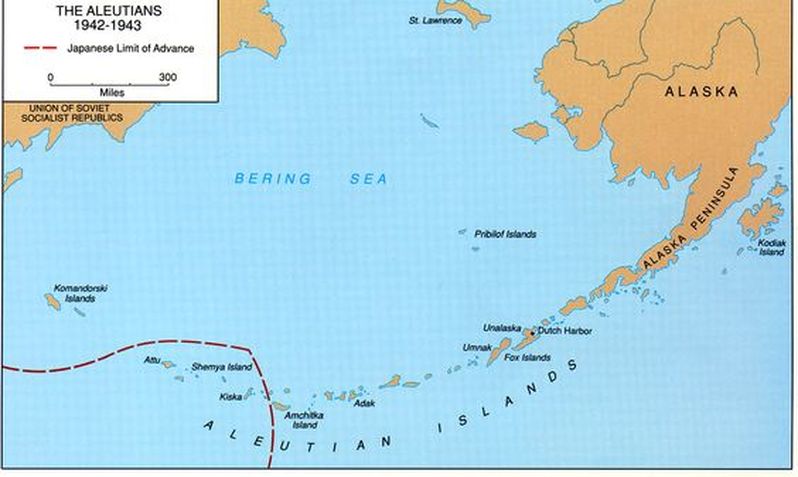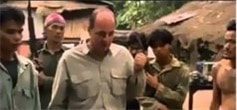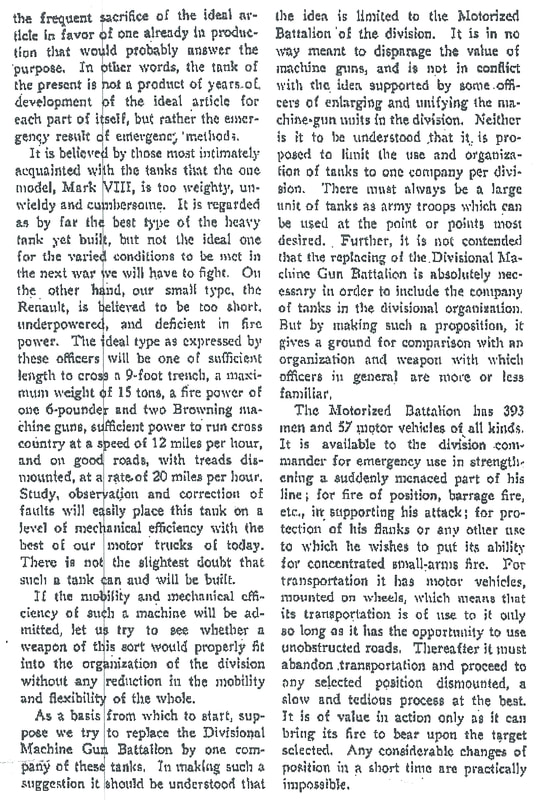|
Submitted by Dick Martin - Information taken from an article in WWII magazine entitled “Off the Map”
Well, of course, we all know the Japanese attacked American Territory at Pearl Harbor on December 7, 1941 and the Philippine Islands the next day as well as other American Territory in the Pacific. But did you know that the Japanese got closer than that by attacking and occupying American Territory on the North American continent? Anybody, who was alive then, sure does!! Have you ever heard of the islands of Attu and Kiska on the Aleutian chain of Islands off but part of the American Territory of Alaska? We had to send American forces and use American forces already there in the Aleutian campaign to eliminate the Japanese threat from the North American Continent in Attu and Kiska. Nobody really knows why they were there. It could have been a diversion from the upcoming battle at Midway or possibly to protect their flank as they drove east. For whatever reason, they were there and the unexpected occupation of those two Alaskan Islands met little opposition. The Japanese dug in and launched highly destructive bombing raids at Dutch Harbor. The Americans retaliated by striking back from Adak, an Air Force Base they built to counter the Japanese occupation. The action was not confined to the islands as Ocean warfare picked up drastically in the area. Finally, in May of 1943, the United States struck back on Attu, and with ferocious fighting in horrible weather on frozen featureless tundra, the 7th Infantry Division forced the Japanese from being in well dug-in high ground positions into a smaller and smaller enclave appropriately called Massacre Bay. The Japanese have no choice but to conduct a suicide bayonet banzai attack against the American position which was stopped cold by hand-to-hand combat and superior American fire power. The Americans learned many lessons on Attu about the Japanese fighting spirit and their willingness to die. Consequently, they prepared massively for the next allied landing on Kiska by employing 35,000 troops in the effort. However, Kiska was no Attu. The landing went smoothly with no resistance. The Japanese forces had left the night before. Down in the continental United States, America had a crazy general by the name of General John DeWitt in charge of civil defense in the west who was afraid of being relieved of his command for being unprepared like his very close friend, Pearl Harbor Admiral Short. Consequently, he conducted too many blackouts and had his antiaircraft guns firing and was scrambling his fighters for every perceived threat from above. This, as well as the Japanese threat on Attu and Kiska made for a jittery public.
0 Comments
Submitted by Daryl Heusinkveld
The following video is of A-1 Skyraider pilot Dieter Dengler’s capture, imprisonment, and escape from a POW camp in Vietnam. The viewer should be cautioned that the video is very emotional as Dieter relates his experiences as a POW. As a side, we would like to inform the viewer that Dieter flew in the same model of plane and in the part of Southeast Asia as Springfield native Daryl Heusinkveld. Dick Martin Submitted by Daryl Heusinveld
You may have already seen this site. I had not. *First click on a state. *When it opens, scroll down to the city where you went to high school and look at the names. *Click on the name and it will give details of the person's death, a picture or at least their bio and medals. This really is an amazing web site. Someone spent a lot of time and effort to create it. I hope that everyone who receives this appreciates what those who served in Vietnam sacrificed. Pass the link on to others, as many knew wonderful people whose names are listed. http://www.virtualwall.org/ iStates.htm When one thinks of Armor (Tanks), you do not think of Japan. Rather, one thinks of Germany and America and the great tank battles across North Africa and Europe. You think of the big tanks of Germany: the Panzer and Tiger tanks; and America: the Sherman and Christie tanks. During WW2, we even had Tank Destroyer Battalions. Springfield native, Bob De Roos, was in the 814th Tank Destroyer Battalion during WW2 in Europe. Why don't we associate Japan with tank warfare? The answer is so obvious you probably think the question does not need to be asked. It is because, of course, the war with Japan was fought mainly in the Pacific Ocean or in the island jungles of the Pacific Ocean where it was difficult to effectively use tanks on a grand scale. Consequently, the Japanese turned their attention to other tactically relevant weapons. Before WW2, Japan was a leading nation in the development of the tank. Although not a direct participant in the WWI meat grinder, Japan was a keen observer in the use of tanks in Europe. Not only did the Japanese use big resources developing the tank, they also developed tactics to go along with using the tank in warfare. This made sense to the leaders because the Japanese were focusing most of their attention on China at the time, where tanks could be used effectively. When WWII broke out, and the Japanese saw it would be fought with America in the Pacific Ocean and on the islands, they made big cuts in their tank development. Tank warfare would have been useful against the Soviets, but the Soviets did not enter WWII until the end of the war when Japan was not capable of developing anything like a tank. Dick Martin For a discussion of what Eisenhower, and most likely the US Army, thought of tank warfare in the 1920s, see the discussion below from Eisenhower submitted by Eugene Hornstra. Page 2 Page 3 Page 4 Page 5
|
Categories
All
Archives
October 2023
|






